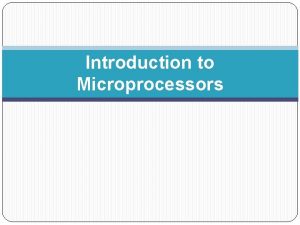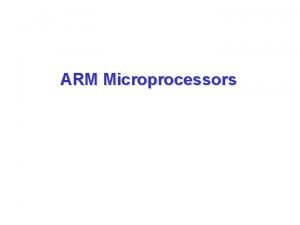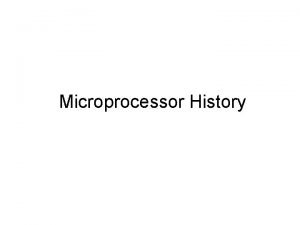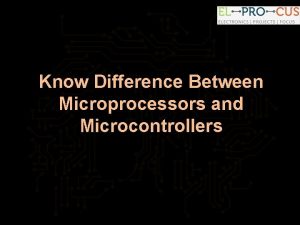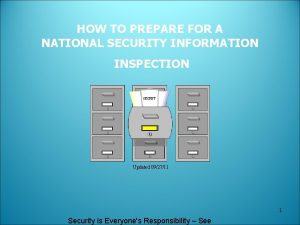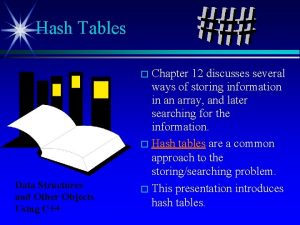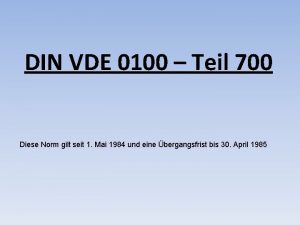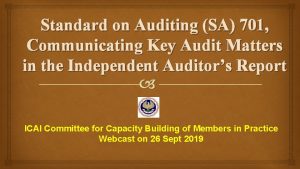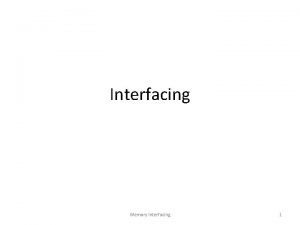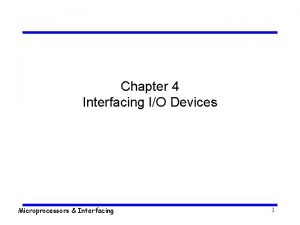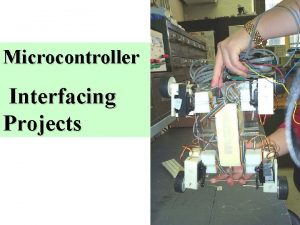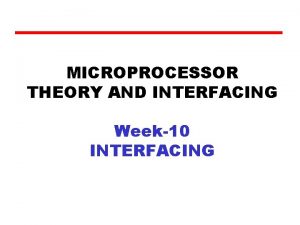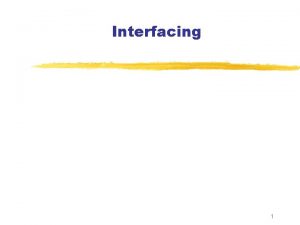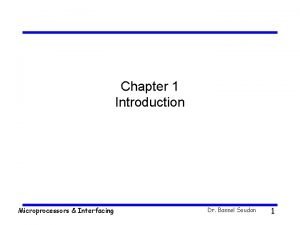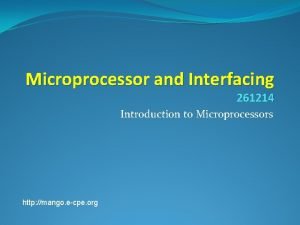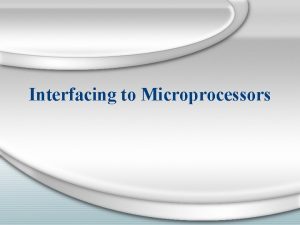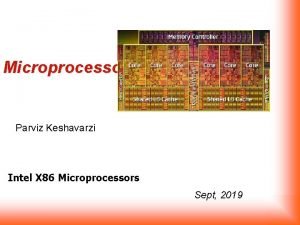CE 701 Interfacing With Microprocessors Introduction to Course













- Slides: 13

CE 701 Interfacing With Microprocessors

Introduction to Course Importance of course and course objective. The course provides a platform for learning the basics of advanced microprocessors, with its architecture details. The course also introduces low level assembly program. Pre-requisite Basics of digital logic and its design and computer organization.

Course Learning Outcomes 1. understand basic architecture of microprocessors 2. develop logic for programs in assembly language 3. design and develop microprocessor based systems for interfacing peripherals

Syllabus • Microprocessor Architecture: architectural details of 8085, 8086 and 80 x 86 processors, pin functions, read/write machine cycles, memory organization (linear, segmentation, paging), interrupts. • Microprocessor Programming: instruction set of 8086 microprocessor, programming model, modular programming (procedures and macros), BIOS/DOS interrupts and programming of interrupt service routines. • Interfacing: Architecture and interfacing of Intel 8255 Programmable Peripheral Interface, Intel 8259 Programmable Interrupt Controller, Intel 8254 programmable timer, 8237 DMA Controller Analog to Digital Converter and Digital to Analog Converter. • Microcontrollers, interfacing and industrial applications in process control • Self-study: • Microcontrollers, interfacing and industrial applications in process control

Reference Book 1. Barry B. Brey, The Intel microprocessors, Prentice Hall publisher 2. Douglas V Hall, Microprocessors and Interfacing: Programming and Hardware, Mc. Graw Hill publisher 3. Ramesh S. Gaonkar, Microprocessor Architecture, Programming, and Applications with the 8085, Prentice Hall 4. John E. Uffenbeck, Microcomputers and Microprocessors: The 8080, 8085 and Z-80 Programming, Interfacing and Troubleshooting, Prentice Hall 5. Peter Abel, IBM PC Assembly language and programming, Pearson publisher

Continuous Evaluation & SEE Assessment scheme Component weightage CE LPW SEE 0. 4 0. 2 0. 4 Class Session Test al Exam 30% 40% Innovative Assignment 30% Continuous Practical Evaluation with 75% Viva Voce 25%

Weekly coverage • Lecture component • 2 - 3 units as per lecture plan • Lab component • Pre-requisites to run lab programs • Weekly practice sessions from 2 nd week onwards • Pre-requisite • 8086 emulators installed in personal machine

Class test Syllabus tentative • Microprocessor Architecture: architectural details of 8085, 8086 and 80 x 86 processors, pin functions, • Microprocessor Programming: instruction set of 8086 microprocessor

Sessional syllabus tentative • Microprocessor Architecture: architectural details of 8085, 8086 and 80 x 86 processors, pin functions, read/write machine cycles, memory organization (linear, segmentation, paging), interrupts. • Microprocessor Programming: instruction set of 8086 microprocessor, programming model, modular programming (procedures and macros), BIOS/DOS interrupts and programming of interrupt service routines.

CE 701 : Lab Practical 1 Objective : To explore Assembler, try a sample program and method to execute with various debug options. Requirements : • Turbo C compiler with TASM assembler • Essential file to execute • /bin/tasm. exe • /bin/tlink. exe • /bin/debug. exe

First ASM(Assembly) Program • Editor : Notepad or any text editor • File extension : . asm Write an assembly program to perform addition of two numbers. Run a sample assembly program and explore different options of debug commands.

Data Segment a db 10 h b db 20 h Data ends Code Segment Start : Assume CS: Code , ds: Data MOV AX, Data MOV DS, AX MOV AL, a MOV BL, b ADD AL, BL Code ends End Start

Compile and execute Compiling C: tasm a. asm • Linking • C: tlink a. obj • Debugging (executing) • Press t to continue with line by line execution
